Family : Sapindaceae

Text © Pietro Puccio

English translation by Mario Beltramini
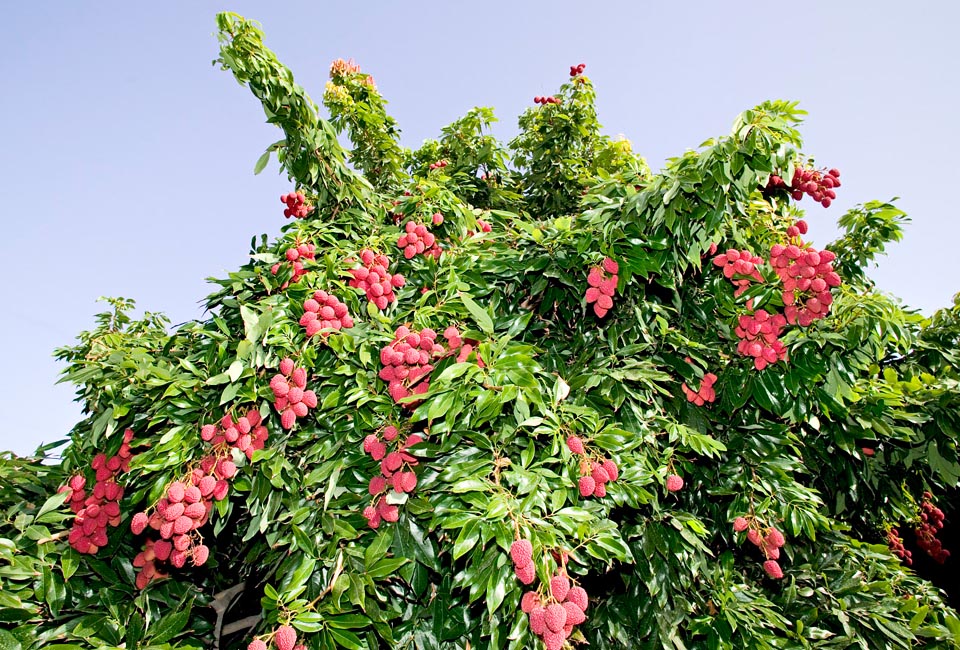
Litchi chinensis is a South-East Asian evergreen tree. Although usually grown low to facilitate harvesting, it can be 18 m tall in nature © Giuseppe Mazza
The name of the genus is Chinese; the name of the species “chinensis” = Chinese, refers to one of its countries of origin.
Common names: “lizhi [li chi]”, “li zhi guo” (Chinese); “lici”, “litchi”, “prugna cinese”, “dattero cinese”, “ciliegia della Cina” (Italian); “leechee”, “litchi” (English); “cerisier de Chine” , “litchi de Chine”, “litchie”, “litchier”, “pied de letchi”, “quenepe chinois” (French); “Litchi”, “Litchibaum”, “Litchipflanze”, “Litschipflaume” (German); “litchia”, “lichia”, “lichieira” (Portuguese); “lichi”, “litchi”, “ciruela de China”, “mamoncillo chino” (Spanish).
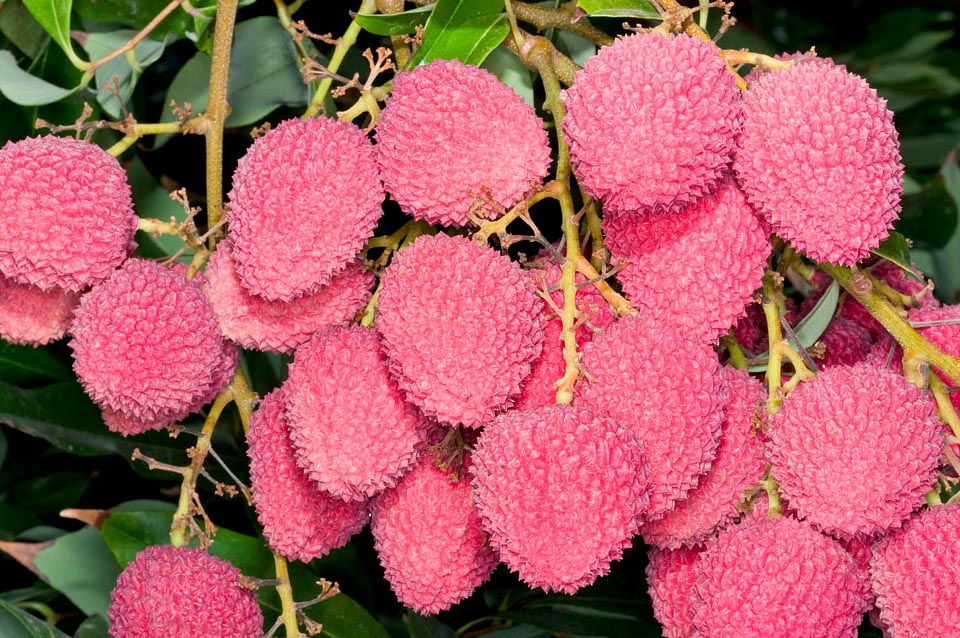
Several different looking horticultural varieties exist with early or late ripening to satisfy the market. Here a 'Calcuttia Late' © Giuseppe Mazza
Terminal inflorescences long up to 30 cm, much ramified, carrying small greenish yellow unisexual flowers, lacking of petals. Globose fruits, 3-5 cm of diameter, bright red coloured when just ripe, becoming brown red with the time.
The pericarp is a thin shell, coriaceous and easily removable, irregularly covered by tubercles, with inside a 12-25 mm long seed, depending on the variety, with whitish aril (which forms the pulp), translucent, juicy and with a sweet and delicate taste.
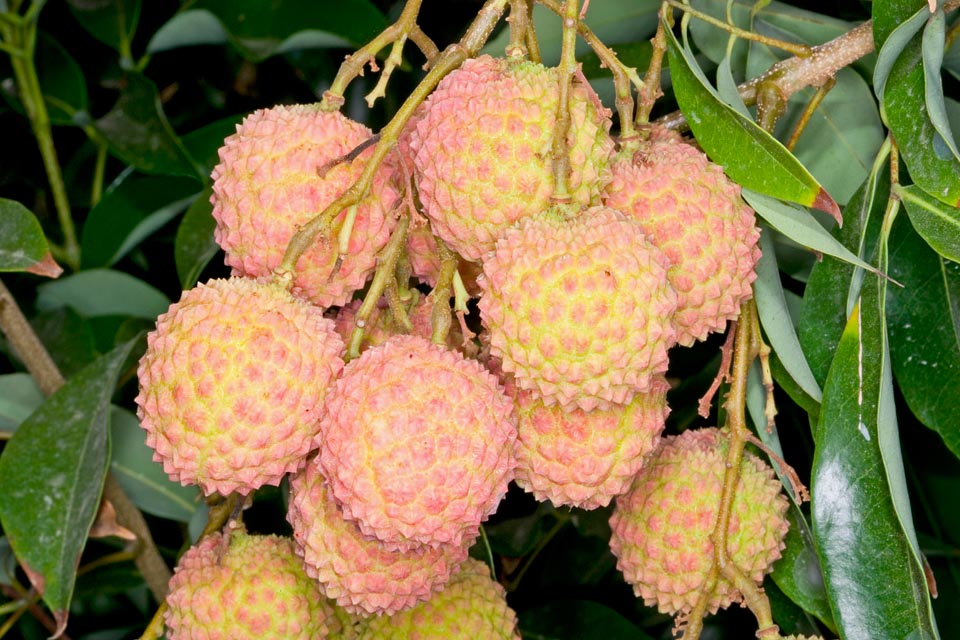
'Kwai Mi Pink' variety. THe shell of the fruits is thin, coriaceous and easy to peel, irregularly covered by tubercles © Giuseppe Mazza
It is to be cultivated in full sun, in well drained soils, kept humid during the vegetative period, rich of organic substance and with an acid or neutral pH. When young it is very sensitive the accumulation of salts in the soil, therefore only light manures are to be effected, utilizing fertilizers for acidophile plants.
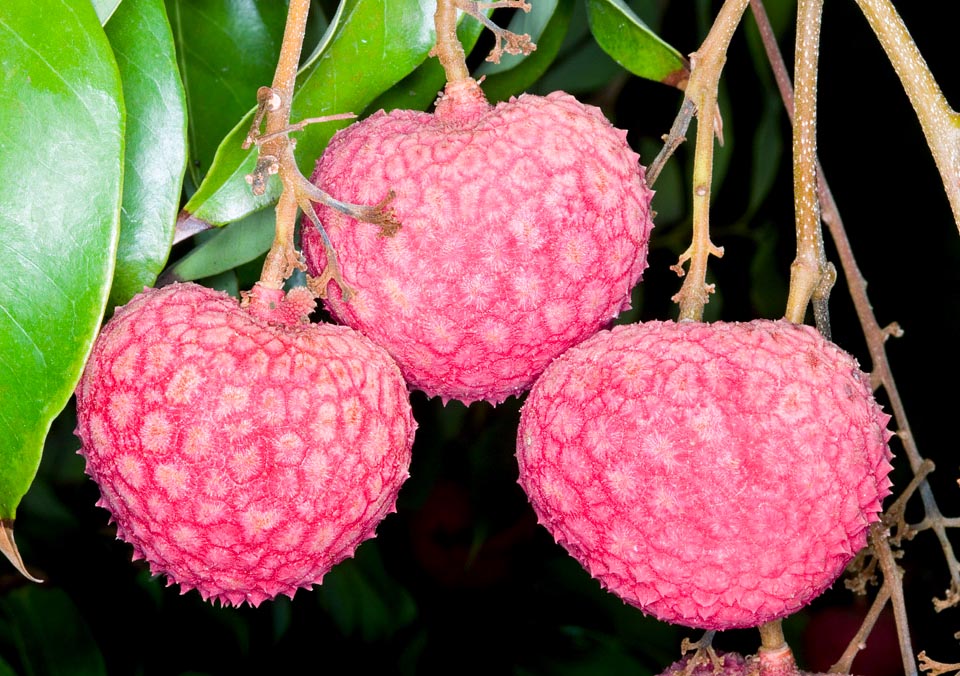
'Kaimana' variety. The edible part, the aril, is a whitish, translucent and juicy pulp, with sweet and delicate taste © Giuseppe Mazza
A particularity in its growth which often leads to error those wishing to get a seed plant is produced by a fast growth during the first weeks, followed by a long vegetative stasis which can last even two years, which can cause to believe that the plant is suffering from some pathology, and therefore abandoned, or lack of nourishment, and therefore hyper-manured, with deathly consequences, as told before.
Synonyms: Scytalia chinensis (Sonn.) Gaertn. (1788); Dimocarpus lichi Lour. (1790); Nephelium litchi Cambess. (1829); Nephelium chinense (Sonnerat) Druce (1917); Litchi chinensis var. euspontanea H.H. Hsue (1983).
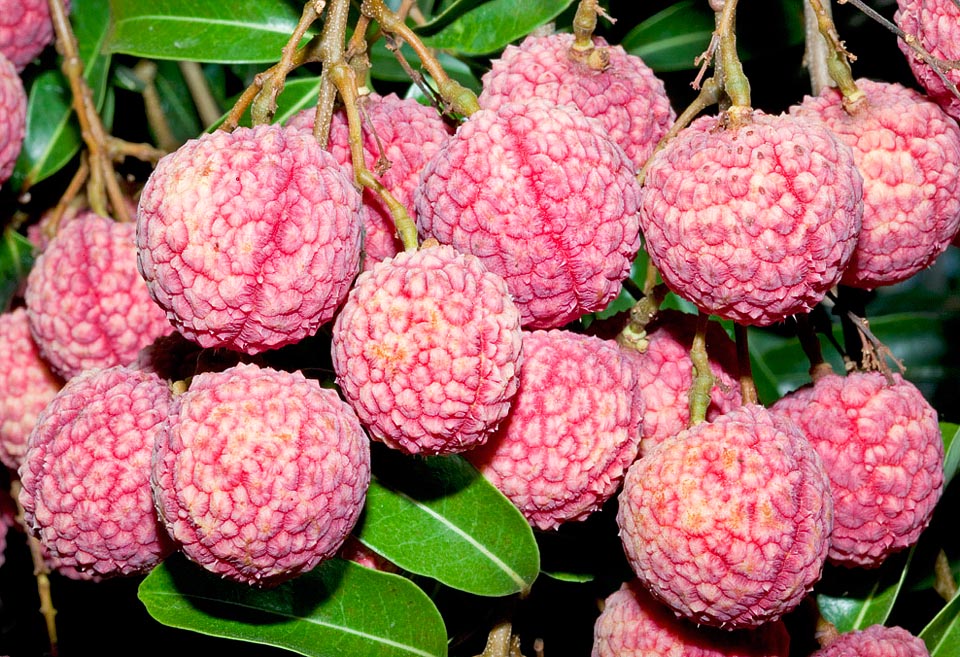
‘Wai Chee’ variety. Selections are very long. The short germinating seeds must be interred in 2 days and a decade is necessary for seeing the first fruits © G. Mazza
→ To appreciate the biodiversity within the SAPINDACEAE family please click here.
